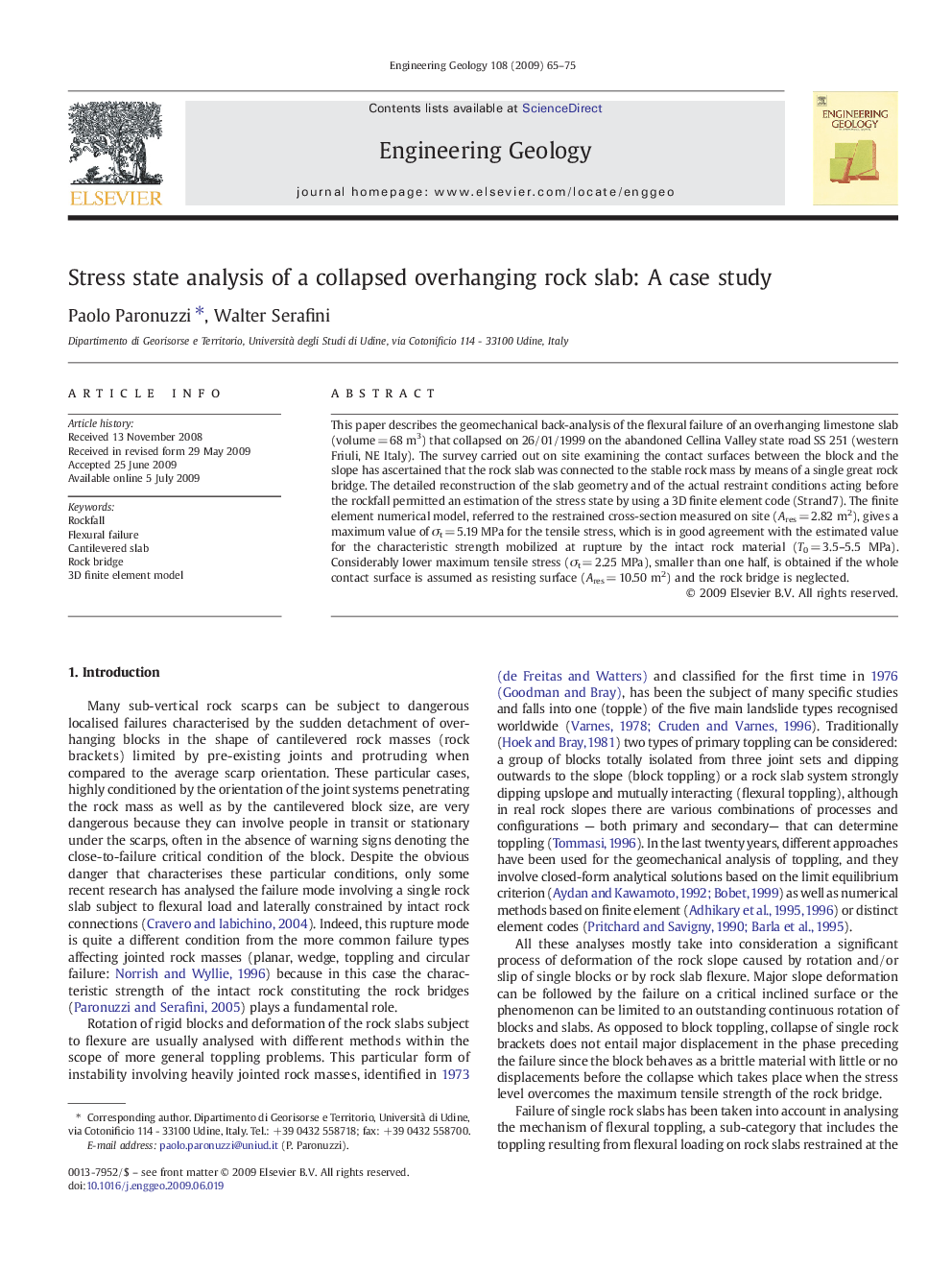| Article ID | Journal | Published Year | Pages | File Type |
|---|---|---|---|---|
| 4744439 | Engineering Geology | 2009 | 11 Pages |
This paper describes the geomechanical back-analysis of the flexural failure of an overhanging limestone slab (volume = 68 m3) that collapsed on 26/01/1999 on the abandoned Cellina Valley state road SS 251 (western Friuli, NE Italy). The survey carried out on site examining the contact surfaces between the block and the slope has ascertained that the rock slab was connected to the stable rock mass by means of a single great rock bridge. The detailed reconstruction of the slab geometry and of the actual restraint conditions acting before the rockfall permitted an estimation of the stress state by using a 3D finite element code (Strand7). The finite element numerical model, referred to the restrained cross-section measured on site (Ares = 2.82 m2), gives a maximum value of σt = 5.19 MPa for the tensile stress, which is in good agreement with the estimated value for the characteristic strength mobilized at rupture by the intact rock material (T0 = 3.5–5.5 MPa). Considerably lower maximum tensile stress (σt = 2.25 MPa), smaller than one half, is obtained if the whole contact surface is assumed as resisting surface (Ares = 10.50 m2) and the rock bridge is neglected.
